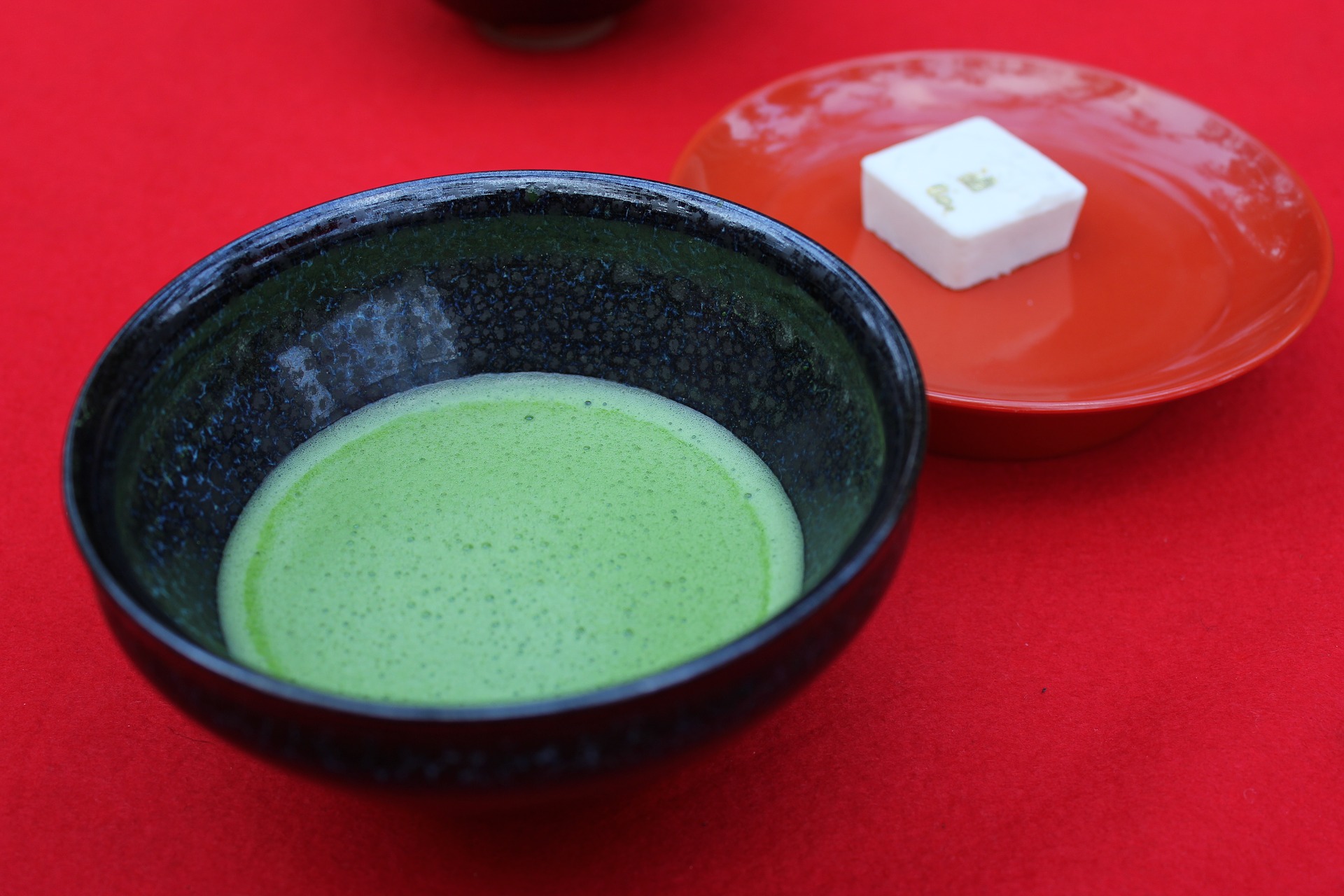When it comes to Japanese Tea, there are like Matcha, Sencha, Gyokuro and so on. However, perhaps you may not know which one fits your favor? Today I would like to introduce them, and also I trust that may help you find out right choice for you, a right travel destination for an excellent Tea tasting, as well as to know how you can enjoy the Tea farm.
1.Matcha -Condensed Sweetness with a hint of bitter, optimized through its 800 years of history–
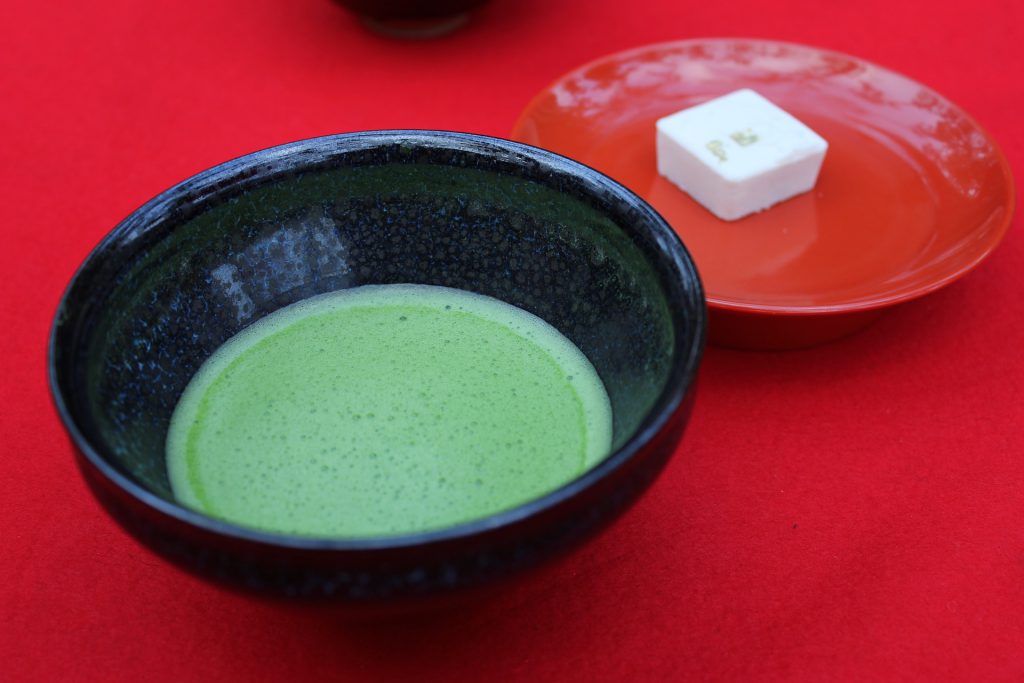
Matcha has the longest history of Japanese tea, and that played an important role especially during the Sengoku-jidai Era. Sen-no-Rikyu is famous as a tea master, and famous military commanders such as Nobunaga Oda and Hideyoshi Toyotomi greatly encouraged tea ceremonies using matcha. However, nowadays, people are rarely enjoying Japanese tea in our daily life. Meanwhile, it is getting more popular to enjoy “eating” Matcha, in the form of matcha-sweets. Thus, people get often surprised, when they drink Matcha for the first time, as their perception for Matcha is actually sweet-basis. Matcha is made by stirring tea leaf powder in hot water, so you can feel the texture when you drink it. It has a rich sweetness, which is different from sugar, and a hint of bitterness makes the taste fresh as one of a kind.
The concept of Japanese Tea is to enjoy the complexity of the taste like soup, rather than relieving the thirst.
As represented by “Tea Ceremony”, which has unique rules of Japanese traditional behavior, we can say that it must be kind of “spiritual” drink that you can taste the flavor of cultural aspect.
However, there are recently many cafes where you can experience matcha without any stress or cultural barrier, e.g. In Kyoto / Uji and Aichi / Nishio, which are typical matcha producing areas.
Of course, there are many tea gardens in those production areas, and if you visit there during April or May, you will be blessed with the opportunity to see tea gardens covered with black and white curtains or straw. Otherwise you will see the skeleton of pipes and the bundle of folded curtains in the tea garden, during other seasons.
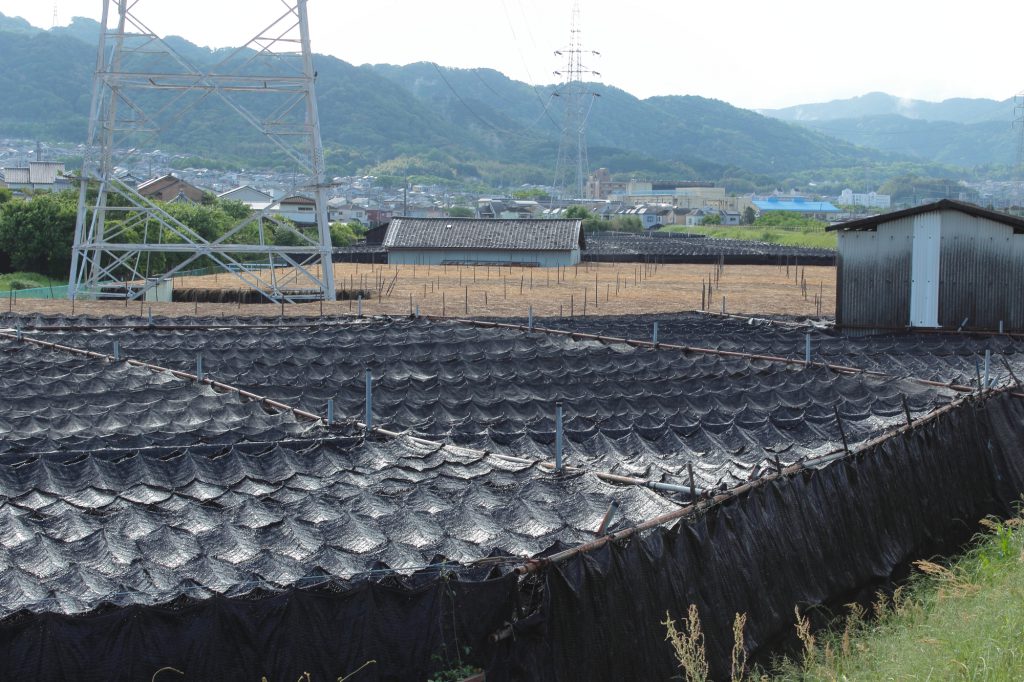
Tea leaves have the property of increasing their sweetness by blocking sunlight, and the tea garden covered with curtains and straw is the one dedicated to Matcha and Gyokuro. The technique of covering tea gardens, which was all done in straw in old days, was formed during the turmoil of the Sengoku Era. During the Edo period only the limited people were allowed to apply that technique. Matcha was such a special drink. In Uji and Nishio, you can taste the eternal history of matcha, which was invented and polished for a long period.
2.Sencha -the most popular&conventional Japanese Tea, steady and sharp bitter taste forms its character–
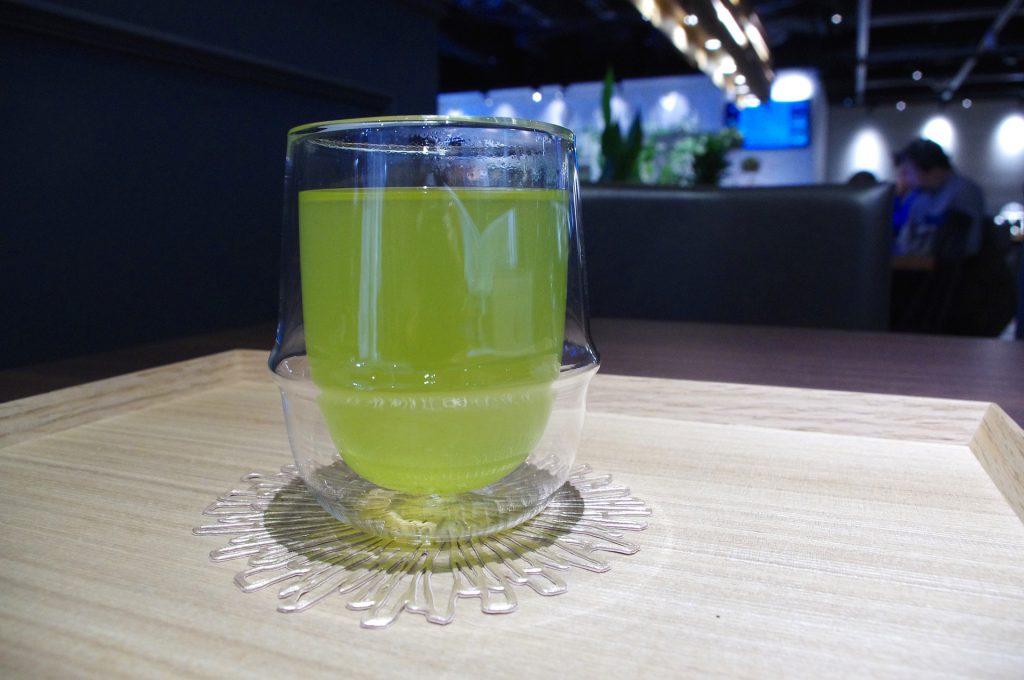
Sencha is the most produced and consumed type in Japan. The one served with Kyusu(Traditional Tea Pot) is most likely the Sencha.
It’s got a good balance of taste-elements, like sweetness, bitterness and so on. Its Aroma usually reflects where that Tea comes from.
A Good taste of its own can let you have 2nd and 3rd cup easily. For those who want to enjoy the aroma and taste of the land, like wine, this is the perfect choice. Please note, though the sharp bitterness is a good point of Sencha, it may not always be suitable for those who are not getting used to the taste.
A famous production area is Shizuoka. At many Japanese tea cafes in Shizuoka prefecture, you can enjoy rich green tea. In Shizuoka, the deep steaming method is popular, and that tea leaves makes deep green color when brewed.
In addition, even with the same Sencha, lightly steamed Sencha is made in the area called the Honyama of Shizuoka, also in Wazuka, south of Uji in Kyoto. As the name suggests, the tea leaves are steamed lightly, and you can make bright yellow tea.
Deep-steamed Sencha is characterized by its rich taste, while light-steamed Sencha is characterized by a taste that more reflects the environment of the production area. Along with this, the bitterness may become stronger, so lightly steamed Sencha may give us more clear picture than deeply steamed Sencha, if people like that taste or not. When you go to the production area, you can see the ridges of tea plants lined up on the mountain and plains in lines. Sencha is also characterized by its bitterness and astringency, and they do not cover the plant, like they do for Matcha, which is a technology that blocks sunlight and increases the sweetness of tea leaves. Therefore, you can enjoy the beauty of the tea ridges lined up in a good manner in the nature.
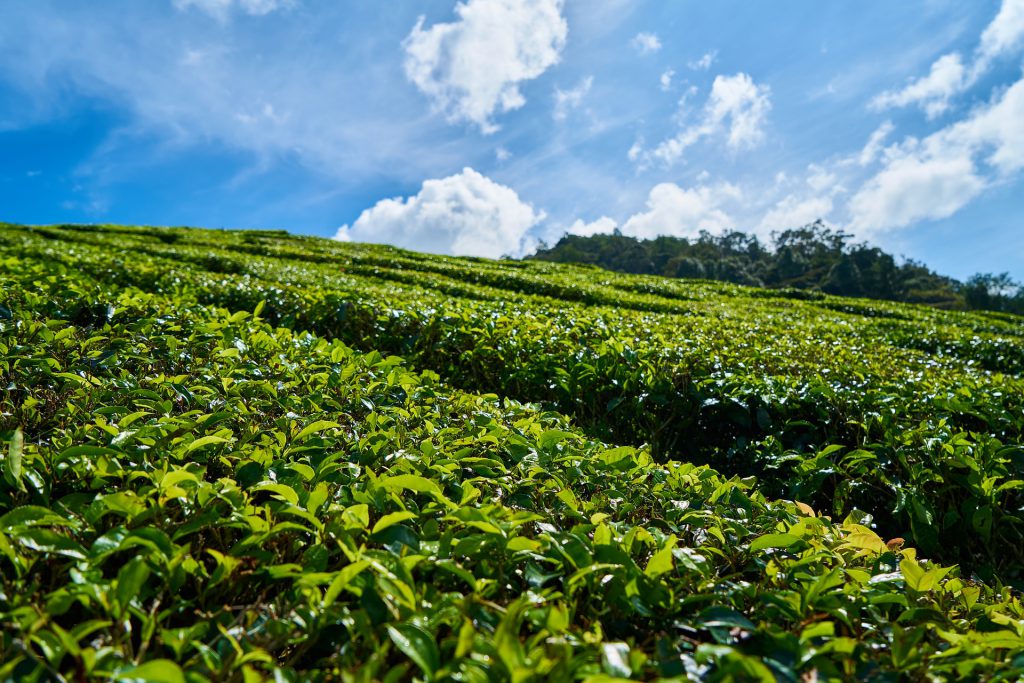
3.Gyokuro -Premium taste, supported by complexity of bitter and sweet tastes–
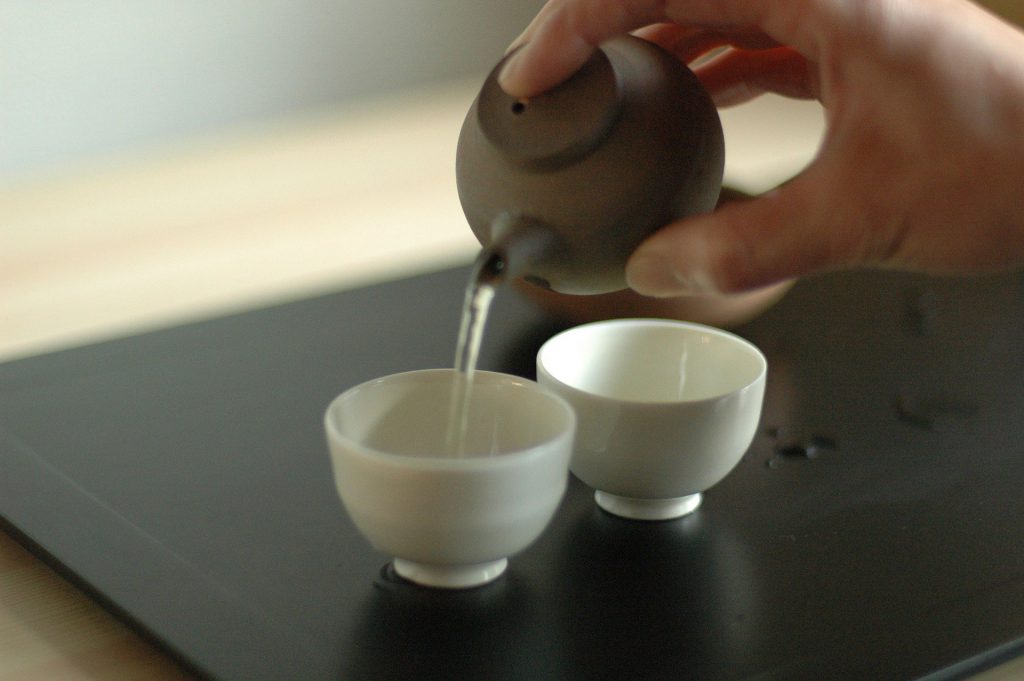
Gyokuro is one of the finest Japanese teas, which can be as expensive as or even more expensive than Matcha. By using more tea leaves than regular tea and using a modest amount of hot water at a low temperature, we can extract the concentrated tastes and sweetness.
When you bring it to your mouth, you will be overwhelmed by its soup stock-like taste and rich aroma. You may get the impression that a few cups of tea are not enough, but when you actually drink it, you can realize that you can fully enjoy it.
Famous production area is Yame, Fukuoka in Kyusu. In particular, there the quality of “Yame Traditional Hon-Gyokuro” is so good that the government protects it as a national intellectual property.
In the production area, like matcha tea gardens, tea leaves are produced from April to May by covering the tea garden with black or white curtains, or straw to block light. By doing so, the taste and sweetness of the tea leaves can be improved. Even other than April or May, you can see the skeleton made of pipes and the bundle of black curtains folded in the tea garden.
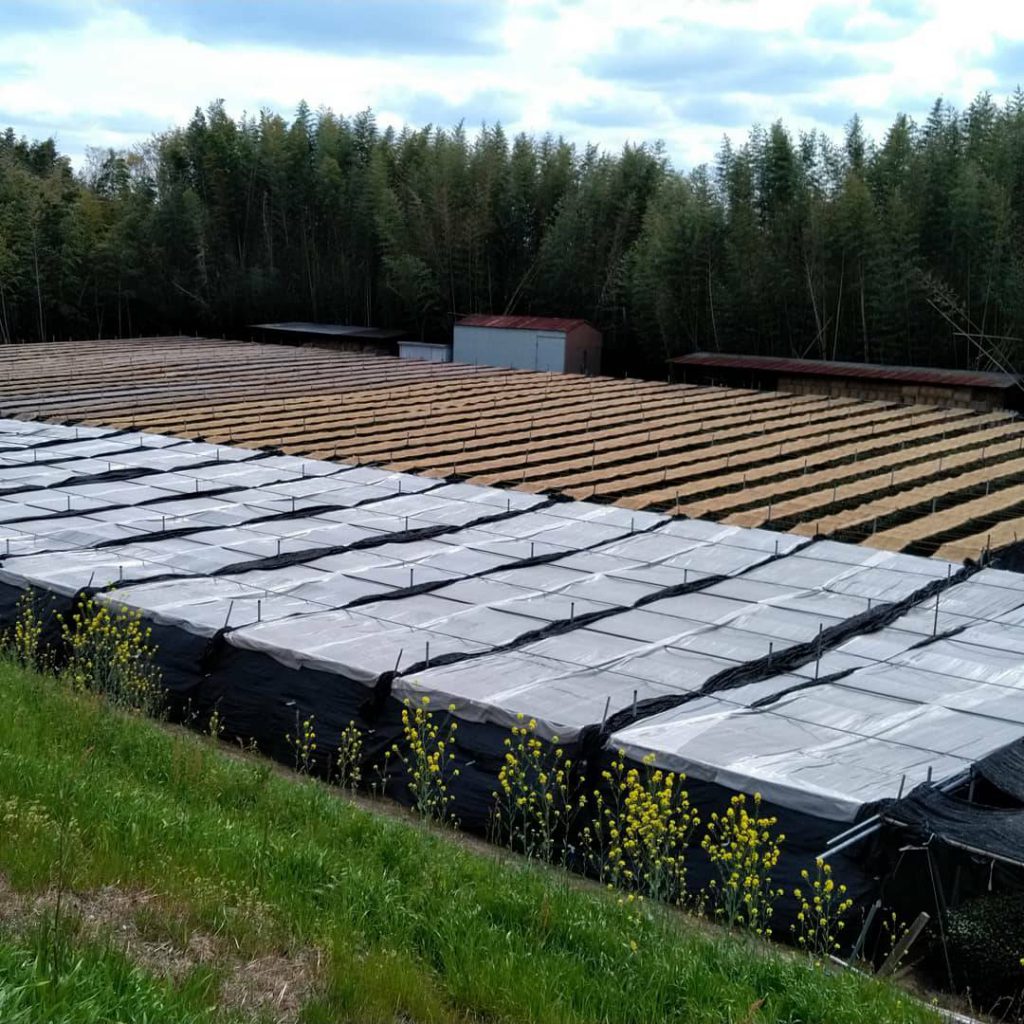
The manufacturing method of Gyokuro was established in the latter half of the Edo period. It is said that it was born as a result of experiment ; what would happen if the tea leaves that were grown by covering them like Matcha, and we extract them by kneading them like Sencha.
Gyokuro, which uses a plenty of fertilizer, increasing its taste and sweetness by cover-method, also concentrating and extract of the tea leaves, can be called foie-gras of Japanese tea. Although it is a little more expensive than Sencha depending on the production area, you can still enjoy Gyokuro at a reasonable price. Other than Yame in Fukuoka, the area around Uji in Kyoto is also a major production area.

